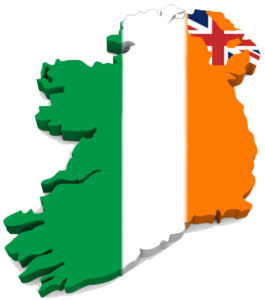April 1916 The Ghosts of 1916 – Ireland’s Easter Rising
 On Easter Monday 1916, about 800 Irish republicans occupied strategic points in Dublin. Six days later their numbers had doubled but, outgunned by the forces of the crown, they surrendered. The Easter Rising (which left 485 dead, 262 of them civilians) looked likely to go down as another failed attempt to achieve, through arms, Irish freedom from British rule. Yet when Patrick Pearse began the uprising by declaring a republic from the steps of the General Post Office on what is now O’Connell Street, Ireland had reached “the point of departure … for all subsequent Irish history”, as F.S. Lyons, a historian, put it. From 1916 Irish history “rushes forwards” to the war of independence of 1919-21, the Anglo-Irish Treaty of 1921, partition and civil war.
On Easter Monday 1916, about 800 Irish republicans occupied strategic points in Dublin. Six days later their numbers had doubled but, outgunned by the forces of the crown, they surrendered. The Easter Rising (which left 485 dead, 262 of them civilians) looked likely to go down as another failed attempt to achieve, through arms, Irish freedom from British rule. Yet when Patrick Pearse began the uprising by declaring a republic from the steps of the General Post Office on what is now O’Connell Street, Ireland had reached “the point of departure … for all subsequent Irish history”, as F.S. Lyons, a historian, put it. From 1916 Irish history “rushes forwards” to the war of independence of 1919-21, the Anglo-Irish Treaty of 1921, partition and civil war.
The British imposed martial law and ordered mass arrests and searches, alienating many who previously had little sympathy for the rebels. The biggest folly came with secret courts-martial and executions: 15 were killed by firing squad between May 3rd and May 12th. The rebels who had been scorned by Dublin crowds after their surrender were hailed as martyrs. Ordinary Irish men and women began embracing the republican cause.
The Irish government in April 2015 unveiled a year-long Easter Rising commemorative programme. Its emphasisis on “reconciliation”: the Anglo-Irish conflict is over.
But Northern Ireland’s unionists will be marking another centenary: their own “blood sacrifice” at the Somme, where some 2,300 Ulstermen died. The first day of that battle, July 1st 1916, is a hallowed day for them.
Source: Joan Hoey: regional editor, Europe, The Economist Intelligence Unit. 2016



